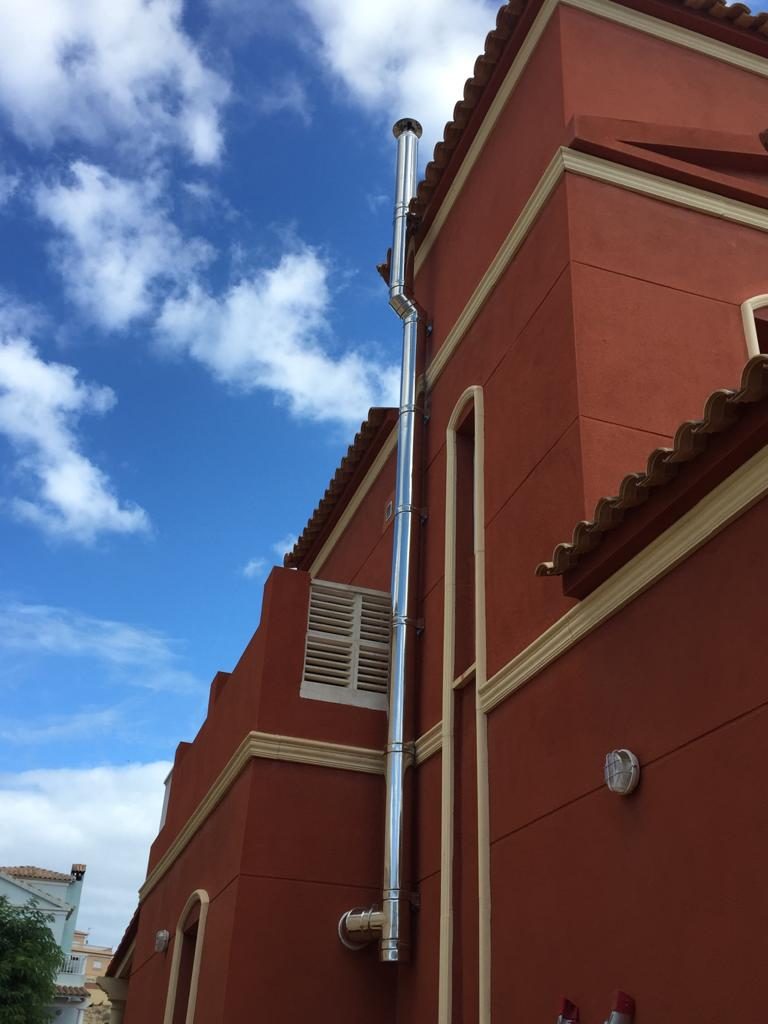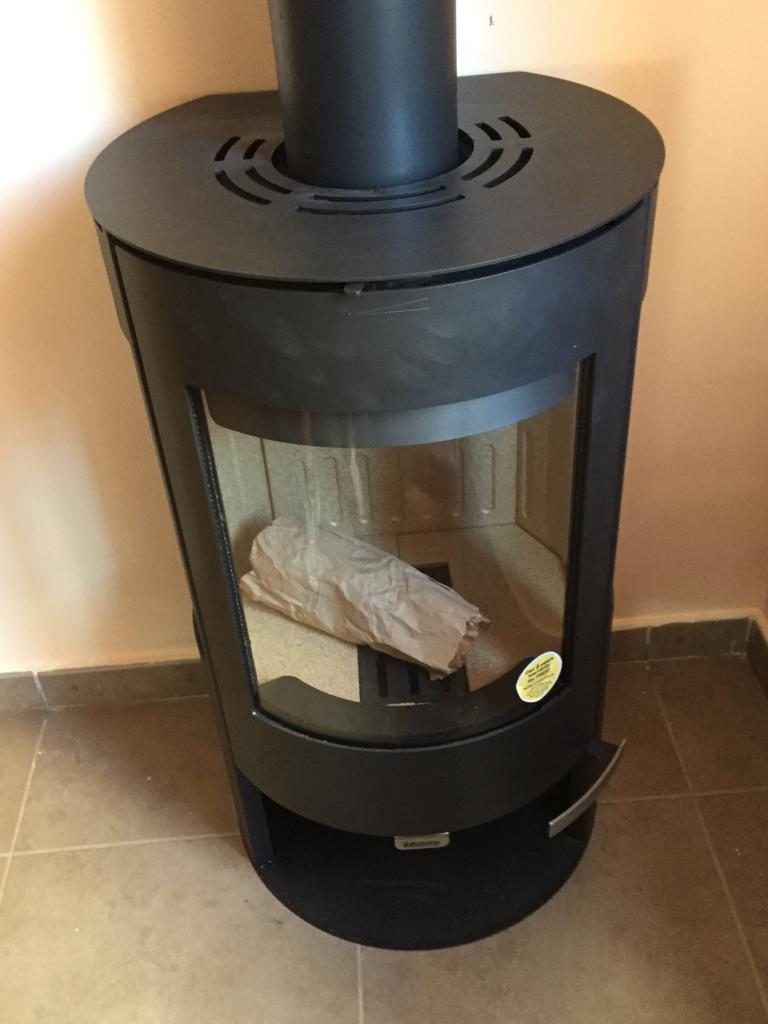Today we bring you the first work in Calpe that we publish. On this occasion we have installed a wood stove.
Keys to choose the wood stove that suits you best
Material
The two main material options are cast iron or welded steel. There is no difference in heating performance between them, so the decision has to do with aesthetics and price. Elegant curves and embossed artistic patterns make cast iron stoves pleasing to the eye, rather than fine furniture for home heating. However, it will pay a higher price, and cast iron stoves must be rebuilt after many years of use to seal the joints between the panels so that the air leak does not allow the fire to burn out of control. Welded steel stoves are simpler, but they cost less. Keep in mind that some newer kitchens are actually steel stoves with decorative cast iron panels mounted on them. Obviously, it is not necessary to rebuild cast iron in that type of stove.
In terms of durability, there is not much difference these days. Molten stoves used to have the edge because any part that failed due to heat stress could be replaced. But now, having learned their lessons, reputable steel stove manufacturers have designed their products so that highly stressed internal parts are replaceable. This is an area to consider when shopping. Sometimes, cheap stoves are not designed for years of continuous use in winter, and the key parts can be welded, so it is advisable to ask the dealer to show you which parts are replaceable.
Combustion technology
The debate over catalytic versus non-catalytic combustion has been ongoing for many years. Both approaches have proven effective, but there are differences in performance. Catalytic combustion, in which smoked exhaust gases pass through a ceramic honeycomb coated with catalyst buried inside the stove where they are ignited and burned, can produce a constant and prolonged heat output. Almost all catalytic stoves have a lever-operated catalyst bypass damper that opens to start and load, and this, combined with the need for the stove to burn hot before the catalyst is activated, tends to make the Operation of these stoves is a bit more complicated. However, this pattern may be changing, since a manufacturer has developed a catalytic stove without a shunt damper.
The catalytic element degrades over time and must be replaced, but its durability is largely in the hands of the stove user. With careful use, the catalyst can last more than six seasons, but if the stove burns excessively, the garbage burns and maintenance is non-existent, the catalyst can fail in just two years.
As the name implies, non-catalytic combustion does not use a catalyst, but creates a good environment for combustion directly in the combustion chamber. Three key features create this environment: combustion chamber insulation, a baffle to divert the flow of gas and preheated combustion air introduced through small holes around the top of the combustion chamber.
Efficiency
The much greater efficiency offered by advanced and certified kitchens is definitely relevant in daily use. On average, the new stoves are at least a third more efficient than the old stoves, belly or old stoves. That’s a third less cost if you buy firewood, or a third less than cutting, transporting and stacking if you cut yours. Although this increased efficiency is a byproduct of mandatory emission limits, it has made EPA standards a winner for both the environment and stove users.
Along with the regulatory change to emission limits, EPA also began to require stoves to be tested to verify their efficiency. The result is that manufacturers are now beginning to compete for greater published efficiencies, a trend that may have drawbacks. Overall efficiency much higher than 80 percent is undesirable if the stove is to be connected to an uninsulated masonry fireplace that extends outside the house, a ventilation option that is still perfectly legal according to the codes of construction. Very high efficiency necessarily means lower flue gas temperatures, which can lead to moisture condensation in a cold chimney and / or the collapse of the air stream and the extraction of exhaust gases in the house. If you plan to buy a stove with an efficiency above 80%, you must combine it with a ventilation system that goes directly to a factory-insulated chimney.
Heat output
Most manufacturers list a maximum heat output in British thermal units (BTU), and for popular stoves this falls in the range of 25,000 to 80,000 BTU. But this figure is misleading. First, the total performance of a stove should not be used frequently because high continuous cooking can seriously damage the bowels of the stove. Second, the medium-sized medium-sized house needs only 5,000 to 20,000 BTU per hour of continuous heating energy, even during cold weather. Some manufacturers use the heat output rate of the EPA tests, which uses softwood fuel, and others use the results of their own tests using hardwood fuel that can produce a much higher maximum output. Another way in which these figures can be misleading is that non-cats tend to produce higher peak heat production, but this does not mean that they will produce more heat during an eight-hour combustion cycle, which is a more relevant performance indicator. The result is that you cannot easily compare the heat output of the stoves because the classifications can be misleading.
Heating capacity
In practical terms, considering all the variables, wood stoves come in only three sizes; Small, medium and large. The shape of the combustion chamber affects its usable volume, so there may be some exceptions to this very approximate guide.
Small stoves have a combustion chamber volume of less than 2 cubic feet and may be suitable for heating a large room or a small seasonal cabin; medium-sized stoves have a combustion chamber volume between 2 and 3 cubic feet and are suitable for heating small to medium-sized houses;
Large stoves have a combustion chamber volume of more than 3 cubic feet and are suitable for heating larger or leaking open houses. Of course, all size considerations should take into account the type of house, the climatic zone and the standard fuel. The correct sizing of stoves for particular purposes and conditions is an area where the advice of an experienced distributor of wood stoves is particularly useful.

